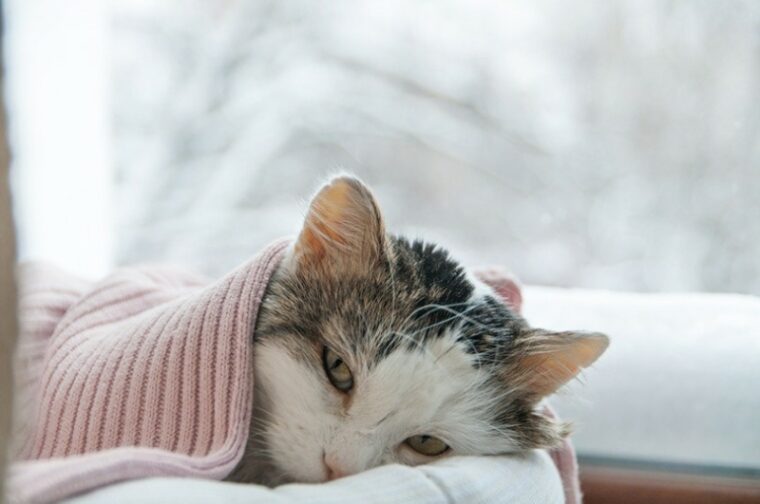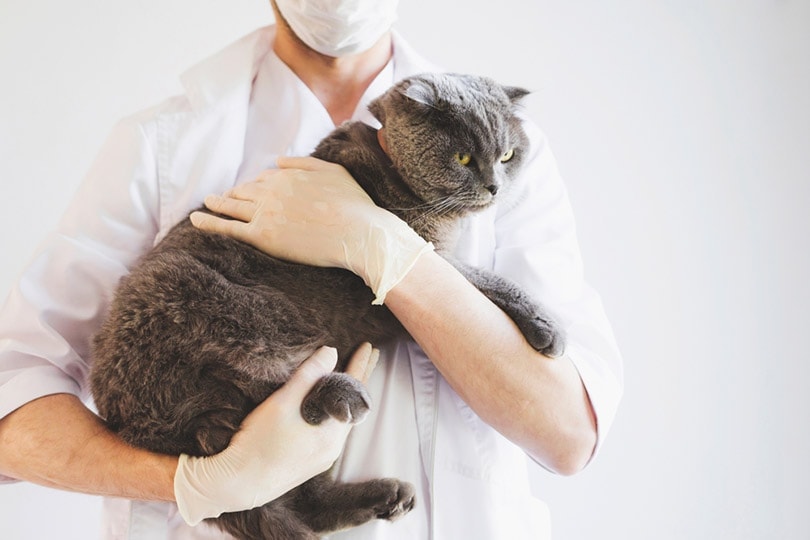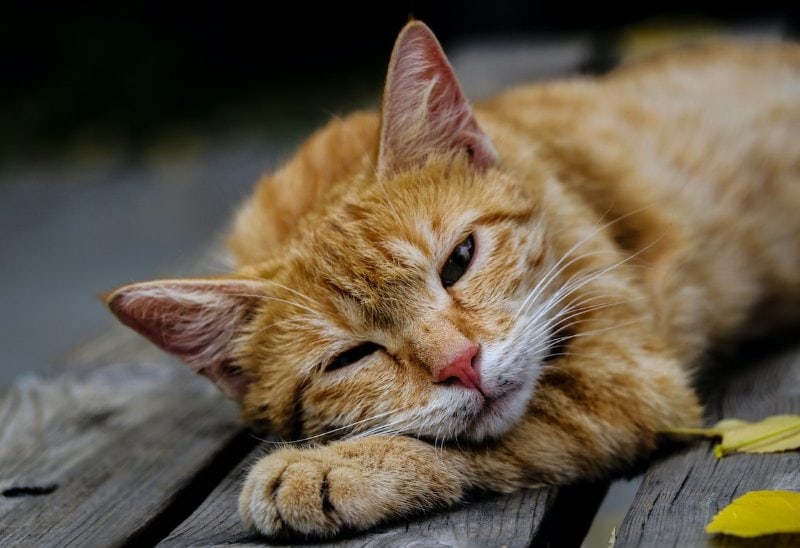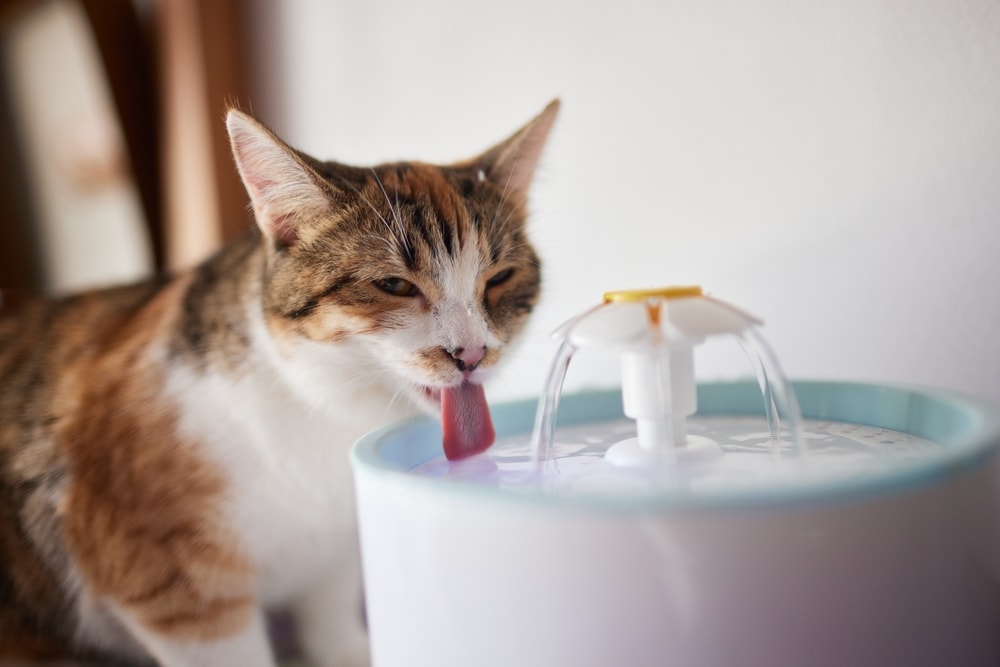
The kidneys have several important functions in a cat’s body. Their main function is to filter out waste products from the bloodstream, but they also regulate the balance of water, minerals, and electrolytes, and they produce hormones that control red blood cell production and blood pressure.
Kidney disease in cats is very common. There are many reasons kidneys start to fail in cats, and if left untreated, kidney disease can cause serious health issues. There is often no cure for kidney disease. However, if it is detected early on, it is possible to improve the quality and increase the length of your cat’s life.

What Is Kidney Disease?
Kidney disease is categorized into chronic or acute disease. The causes, treatments, and prognosis vary greatly.
Acute disease occurs when the kidneys suddenly stop functioning properly. The signs and severity depend on the underlying cause. If the kidneys are malfunctioning for a longer period, this is classed as chronic disease and there is usually irreversible damage which will progressively get worse.
Clinical signs of kidney disease will be apparent depending on how much of the kidney is damaged and therefore how much the function is compromised. When a certain amount of damage has occurred, (usually enough to cause loss of two-thirds of the function) tell-tale signs of kidney failure become apparent to cat owners. At this stage, it is very unlikely that regeneration of normal function will occur.

What Are the Signs of Kidney Disease?
Unfortunately for our cats, the signs can be very subtle, especially with chronic disease. Often it is a slow and gradual progressive disease and in the early stages, there can be no signs at all. This means that when owners do note clinical signs, it is common that the disease is in an advanced stage.
If you notice any of the signs listed above, contact your vet. If kidney disease is detected early, there is an increased chance your vet will be able to prescribe medication or recommend changes that will slow down the disease progression. This means your cat will be more comfortable and is likely to live for longer.
Older cats are more prone to developing kidney disease. It is good practice to have regular checkups with your vet when your cat is over the age of 8. This is when they are classed as geriatric.

What Are the Causes of Kidney Disease?
Note: Most of the causes of acute kidney disease can also lead to chronic kidney disease depending on the circumstances.

How Is Kidney Disease Diagnosed?
Kidney disease is diagnosed from bloodwork and urinalysis, alongside clinical signs.
Urine-specific gravity is analyzed, as well as a urine sediment exam.
Once the diagnosis is made, the disease can be classified into one of four different stages.
The 4 Stages of Kidney Diseases
Stage 1
Creatinine is less than 1.6. Less than 66% of kidney function has been lost. Clinical signs are not usually noted.
Stage 2
Creatinine is between 1.6 and 2.8. 66% to 75% of kidney function has been lost. Some clinical signs may be noted.

Stage 3
Creatinine is between 2.9 and 5.0. 76% to 90% of kidney function has been lost. Now various clinical signs are seen, and the cat is often showing signs of feeling sick.
Stage 4
Creatinine level is above 5.0. Over 90% of kidney function has been lost. Most of the clinical signs are noted and often the cat is very poorly.

How Do I Care for a Cat with Kidney Disease?
Caring for a cat with kidney disease can be a very challenging but also rewarding experience for owners. It is important to keep communicating with your vet so that they can give the correct advice and treatment. It is very much a team effort involving you and your vet. The most important thing you can do at home is monitor clinical signs and report any changes to your vet. Regular monitoring is important as it allows your vet to assess the disease and enable them to add in different management strategies—if and when required.
The key components of the management of kidney disease are diet, hydration, and medication. Treatment options are tailored toward the underlying cause (if it has been identified). The stage of kidney disease will also dictate what sort of measures need to be taken.

Diet
Changing your cat’s food to a special kidney diet is one of the things your vet will recommend. This is thought to make a significant difference to your cat’s quality of life. Kidney diets have specific amounts of protein, sodium, and phosphorus which are designed to support the kidneys and minimize toxin build-up. Always make changes to your cat’s diet gradually. Feeding wet food as opposed to dry biscuits is also thought to help with kidney disease as it increases the amount of fluid taken in.
Fluids
Cats will often become dehydrated with kidney disease. It is vital that they always have access to fresh drinking water and drinking should be actively encouraged. Sometimes cats become severely dehydrated and if this is the case, your vet can administer subcutaneous or intravenous fluids in an attempt to rehydrate them.

Medication

Frequently Asked Questions
How long can cats live with kidney disease?
Cats can live a long time with kidney disease. The prognosis depends on the cause and stage of the disease. It is usually a progressive disease where the severity gradually increases. If there is good owner compliance and commitment, and the cat is in the early stages, the life expectancy is relatively good. If the cat is in later stages, management options are more limited, and the life expectancy is considerably lower.
At what age do cats start getting kidney problems?
Cats can develop kidney problems at any age. Some issues are congenital, which means they are born with them. Some are hereditary so they will be passed down through generations, and some can occur at any stage of the cat’s life such as due to an injury or infection. Chronic kidney disease typically occurs in middle age or older cats (usually over the age of 8). The older your cat gets, the more likely it is that they will experience kidney problems. It is important to get them checked regularly with your vet to monitor for any signs.

Are cats with kidney disease in pain?
Cats can be in a considerable amount of pain with kidney disease. It does depend on what exactly the disease process is and how it came about. Acute renal failure occurs over a short space of time and often dramatic changes are seen. Cats may feel physical pain in the area of the kidneys due to inflammation or infection. They may feel uncomfortable or nauseous if there is chronic disease present and toxins are building up in the body. Systemic effects of kidney disease can lead to painful secondary conditions.
However, depending on what exactly is affecting the kidneys, there may be no pain associated with the condition.

Conclusion
Kidney disease in cats is a multifactorial problem. It is a complex issue, mainly due to the fact that there are many different causes and management options. Some cats can recover fully from acute kidney disease although they may be left with long-term issues that can predispose to chronic disease.
Cats with chronic kidney disease will not recover, as there is no direct cure. However, with appropriate investigations and meticulous monitoring, cats can live for a substantial amount of time if the disease is identified early and is treatable or manageable.
Featured Image Credit: Germanova Antonina, Shutterstock






